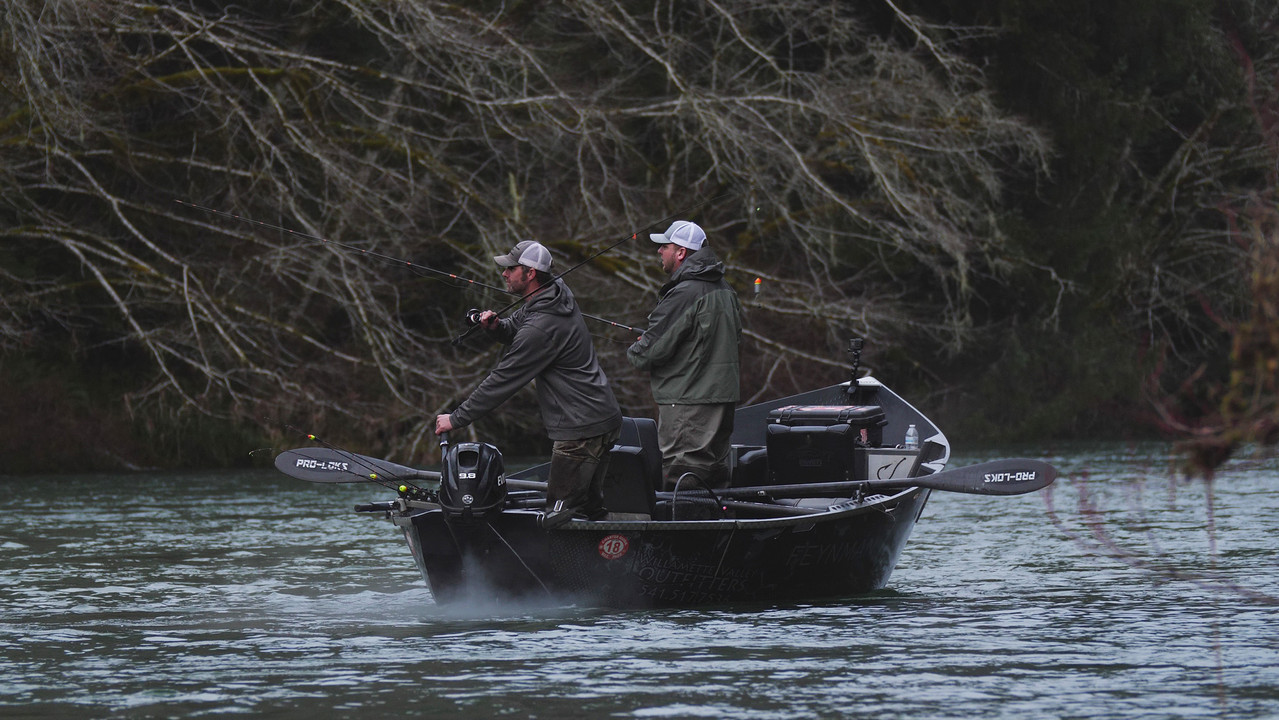Steelhead Side Drift Fishing
Side drift fishing is a popular technique used by anglers to target steelhead. Side drifting is a method commonly used to present bait to steelhead in rivers and streams.
In side drift fishing, anglers typically use a drift boat or a raft to navigate down a river while fishing. The boat is positioned to drift with the current, allowing anglers to present their bait or lures to steelhead that are holding in the river. This technique involves casting upstream and allowing the bait or lure to drift naturally downstream along the river bottom, mirroring the natural movement of the baitfish that steelhead feed on.
Even though using drift boats can make side drifting a lot easier, there are a lot of great bank spots that anglers can choose from. More mature steelhead usually swim close to the bank near drop-offs. They are often more active around drop-offs because they are trying to make it to the upper section of the streams. This gives bank anglers more chances to come across more fish. Plus, the water usually clears up at a drop-off which gives better visibility for steelhead to see your bait or lures.
Anglers often use a variety of bait and lures for side drift fishing, including cured salmon or steelhead eggs, artificial soft plastic baits, and small spinners or spoons. They're often paired with a sensitive rod and reel setup to detect subtle bites from steelhead.
Successful side drift fishing requires a good understanding of river currents and steelhead behavior, as well as the ability to make precise casts and control the drift of the bait or lure. It's a challenging and rewarding technique that requires skill and patience, but can be highly effective for catching steelhead in river and stream environments.
Conditions for Steelhead Side Drift Fishing
Steelhead side drift fishing is often most effective in clear, moderately flowing water. The ideal conditions for steelhead side drift fishing typically include:
1. Water flow: Moderate water flow is generally preferred for side drift fishing. It allows for the proper presentation of bait or lures for the fish without being too swift or too stagnant.
2. Water clarity: Clear water is best for side drift fishing as it allows the fish to see the bait or lure more easily. This can lead to better strikes and hookups.
3. Depth: The ideal depth for side drift fishing can vary, but generally, water that is between 2 to 8 feet deep is often suitable for this technique.
4. Structure: Look for areas with underwater structure such as rocks, boulders, riffles, or runs where steelhead are likely to hold.
5. Weather conditions: Calm or slightly overcast days are often favorable for steelhead side drift fishing. Extreme weather conditions, such as heavy rain or intense sunlight, can make it more challenging.
6. Water temperature: Steelhead are known to be more active in colder water, so cooler water temperatures are generally favorable for side drift fishing. However, steelhead can still be caught in warmer water under the right conditions.
It's important to note that fishing conditions can vary depending on the specific river or body of water, so it's always a good idea to consult local fishing reports or talk to knowledgeable anglers familiar with the area for the most up-to-date information.
Find All Our Steelhead Tackle Here.
EXPLORE POPULAR ARTICLES
-
Crabbing in the Pacific Northwest
Nov 11th 2024Crabbing in the Pacific NorthwestThe Pacific Northwest (PNW) is a region known for its stunning land
-
Salmon Fishing in the Pacific Northwest: A Guide to the Best Angling Experience with Fish-Field
Nov 7th 2024The Pacific Northwest (PNW) is known for its stunning landscapes, rich natural resources, and, of co



